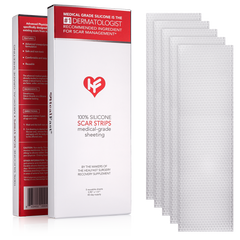

What Are the Different Types of Post-Surgery Pain?

Recovering from surgery is different for everyone, but one thing almost all patients go through is post-surgery pain. This discomfort is a natural part of healing, but it can still feel overwhelming if you don’t know what to expect. By understanding the different types of pain after surgery, why they happen, and how long they usually last, you’ll feel more prepared and less anxious during recovery.
In this guide, we’ll walk you through the most common types of pain people experience after surgery, explain what’s normal, and share when it might be a sign to contact your doctor.
Why Do You Experience Pain After Surgery?
Surgery involves cutting through tissues, such as skin, muscles, and sometimes nerves, which naturally causes discomfort during recovery. Even minimally invasive procedures can lead to soreness and sensitivity. The body reacts to surgical trauma with inflammation, swelling, and tissue repair, all of which contribute to postoperative pain.
Several factors influence the intensity and duration of pain, including:
- The type of surgery performed (minor vs. major).
- Location of the incision.
- Your overall health and age.
- Pain threshold and tolerance.
- Whether nerves or muscles were involved.
Now, let’s break down the types of post-surgery pain you may experience.
Most Common Post-Surgery Pain Patients Experience
1. Incision Pain After Surgery
This is the most common type of pain patients feel. When a surgeon makes cuts through your skin and tissues, it’s normal to experience stinging, throbbing, or soreness around the incision site.
Most of the time, this pain improves within the first two weeks; however, for some individuals, it may persist longer, especially if the healing process is slow. If the pain becomes stronger instead of easing, or if you notice swelling, pus, or redness, consult your doctor, as this could indicate an infection.
2. Muscle Pain After Surgery
During surgery, muscles may be moved, stretched, or cut, which leaves them sore afterwards. This pain feels like muscle stiffness or tenderness, especially when you try to move, stand up, or change positions.
While it usually gets better within a few weeks, it can take longer for bigger operations. Gentle movement, light stretching, and following your doctor’s advice on activity can help ease this type of pain.
Tip: HealFast’s Tissue Repair Supplement can support faster muscle and tissue healing during your recovery.
Check out the guide: Muscle Soreness: Causes, Recovery, and Prevention
3. Post-Surgery Nerve Pain
Sometimes, nerves are affected during surgery, which can cause burning, tingling, or numbness near the incision. This is called nerve pain, and it can last longer than other types of pain. Some patients describe it as an electric-shock feeling. While mild nerve pain often improves as the nerves repair themselves, stronger or ongoing pain might need special medicines or physical therapy.
In fact, research shows that surgically induced neuropathic pain can persist in 10–50% of patients after common operations, making it a relatively frequent concern (1).
4. Abdominal Pain and Cramps
If your surgery was in the stomach area, you may feel pain in the abdomen or even stomach cramps. This is common after procedures like hernia repair, gallbladder surgery, or C-sections.
The pain is often sharper when you cough, sneeze, or move suddenly. Some patients also get cramps or bloating due to anesthesia or changes in bowel movements. While this usually improves within a few weeks, severe or ongoing cramps should be checked by your doctor.
5. General Body Soreness
It’s not unusual to feel sore all over your body after surgery, even in areas far from the incision. This can happen because you were lying in one position for several hours under anesthesia, or due to stress on your muscles and joints during surgery.
Many patients describe it as feeling stiff or achy everywhere. Luckily, light walking, staying hydrated, and gentle stretching can help reduce this soreness.
6. Sensitive Skin and Stitch Pain
Some people notice their skin feels very sensitive after surgery, especially around the stitches. It may feel itchy, burning, or irritated when clothing touches it. You may also notice some pulling or tugging sensations as the stitches heal, which is normal.
If the pain around your stitches feels sharp or gets worse instead of better, it’s best to consult your doctor. Wearing soft, loose clothes and using scar-friendly products after the stitches are removed can also help.
7. Swelling and Bruising after Surgery
When you see bruising after surgery around the incision area, don’t panic. It is completely normal (2). It happens because small blood vessels are damaged during the procedure. The bruises may look tender and change color over time, but usually fade within 2–3 weeks.
Swelling often comes along with bruising and can make the area feel tight or uncomfortable. Using a cold compress (if approved by your surgeon) can help ease both bruising and swelling.
Worth Noting: Silicone-based scar gels and sheets can help reduce the appearance of scars and support smoother skin healing after surgery.
Acute vs. Chronic Pain After Surgery
Not all post-surgery pain is the same. Acute pain is the normal pain you feel right after surgery, it usually lasts days to weeks and slowly gets better.
Chronic pain, on the other hand, lasts for months and may happen because of nerve damage or scar tissue. If your pain doesn’t ease after three months, or if it gets worse, it’s worth getting checked by a specialist.
How Long Does Recovery Pain Typically Last?
One of the most common concerns patients have after surgery is how long they’ll need to manage discomfort. Pain levels and recovery time can vary based on the type of procedure, your overall health, and how well you follow post-operative care. Here’s a general timeline to give you an idea of what to expect:
A. Minor surgeries: Pain usually improves within 1–2 weeks.
B. Major surgeries (e.g., joint replacements, abdominal surgery): Pain may last several weeks to a few months.
C. Nerve pain: Can linger longer, sometimes requiring targeted treatment.
How to Deal With Post-Surgery Pain?
Managing pain is critical not just for comfort but also for recovery. Poorly controlled pain can slow down healing, reduce mobility, and increase the risk of complications. Here are some strategies for post-surgery pain relief:
-
Medications: Painkillers prescribed by your doctor (NSAIDs, opioids, or nerve medications).
-
Cold & Heat Therapy: Ice packs reduce swelling, while warm compresses relax stiff muscles (if approved by your surgeon).
- Movement: Gentle walking and physical therapy prevent stiffness and speed healing.
- Nutrition & Supplements: A nutrient-rich diet with protein, vitamin C, zinc, and omega-3s plays a major role in repairing tissues and reducing inflammation. To further support recovery, specially formulated post-surgery supplements can give your body an extra boost.
At HealFast, we offer doctor-backed recovery supplements designed to accelerate wound healing, strengthen muscles, and lower the risk of complications.
You can also hear directly from patients about their experiences in this video.
- Mind-body Techniques: Deep breathing, meditation, and relaxation can help manage discomfort.
Keep Learning:
Why Sitting After a BBL Surgery Is So Risky, And How to Avoid It?
Can Supplements Help Heal Your Joints After Surgery?
What to Eat Before and After Surgery for Faster Recovery?
What Is the Most Painful Day After Surgery?
Many patients report that pain often feels the worst around day 3 after surgery (3). This is usually when inflammation peaks, the effects of anesthesia have fully worn off, and patients may begin reducing their pain medications.
At the same time, normal movements like standing, sitting, or even breathing can put stress on the surgical area, making discomfort more noticeable. With careful pacing, proper rest, and following your surgeon’s guidance, the pain typically starts to improve after this point.
Reference:
- Borsook, D., Kussman, B. D., George, E., Becerra, L. R., & Burke, D. W. (2013). Surgically-induced neuropathic pain (SNPP): Understanding the perioperative process. Annals of Surgery, 257(3), 403–412. https://pmc.ncbi.nlm.nih.gov/articles/PMC3546123/
- Anon. (n.d.). How long does it take for swelling to go down after surgery? eMedicineHealth. Retrieved September 9, 2025, from https://www.emedicinehealth.com/how_long_for_swelling_to_go_down_after_surgery/article_em.htm
- Anon. (2017, January). Pain after surgery: What to expect. WakeMed. https://www.wakemed.org/about-us/news-and-media/wakemed-blogs/2017/01/pain-after-surgery-what-to-expect

- One of the most followed doctors online with 3.5+ million followers and 1 billion+ views in 2024 (Instagram, YouTube, TikTok, and Facebook)
- Board Certified Anesthesiologist and Clinical Assistant Professor who frequently teaches medical students, residents, and other physicians in medical school and hospital settings.
- Speaker and medical researcher having published 1 book, 3 book chapters, and over 57 scientific articles. Made over 100 presentations at national and international medical conferences on topics ranging from healthcare innovation, to nutrition, to patient safety.
- Serial entrepreneur having launched several healthcare companies with a track record of innovation within healthcare systems

Myro Figura, M.D.
- One of the most followed doctors online with 3.5+ million followers and 1 billion+ views in 2024 (Instagram, YouTube, TikTok, and Facebook)
- Board Certified Anesthesiologist and Clinical Assistant Professor who frequently teaches medical students, residents, and other physicians in medical school and hospital settings.
- Speaker and medical researcher having published 1 book, 3 book chapters, and over 57 scientific articles. Made over 100 presentations at national and international medical conferences on topics ranging from healthcare innovation, to nutrition, to patient safety.
- Serial entrepreneur having launched several healthcare companies with a track record of innovation within healthcare systems














